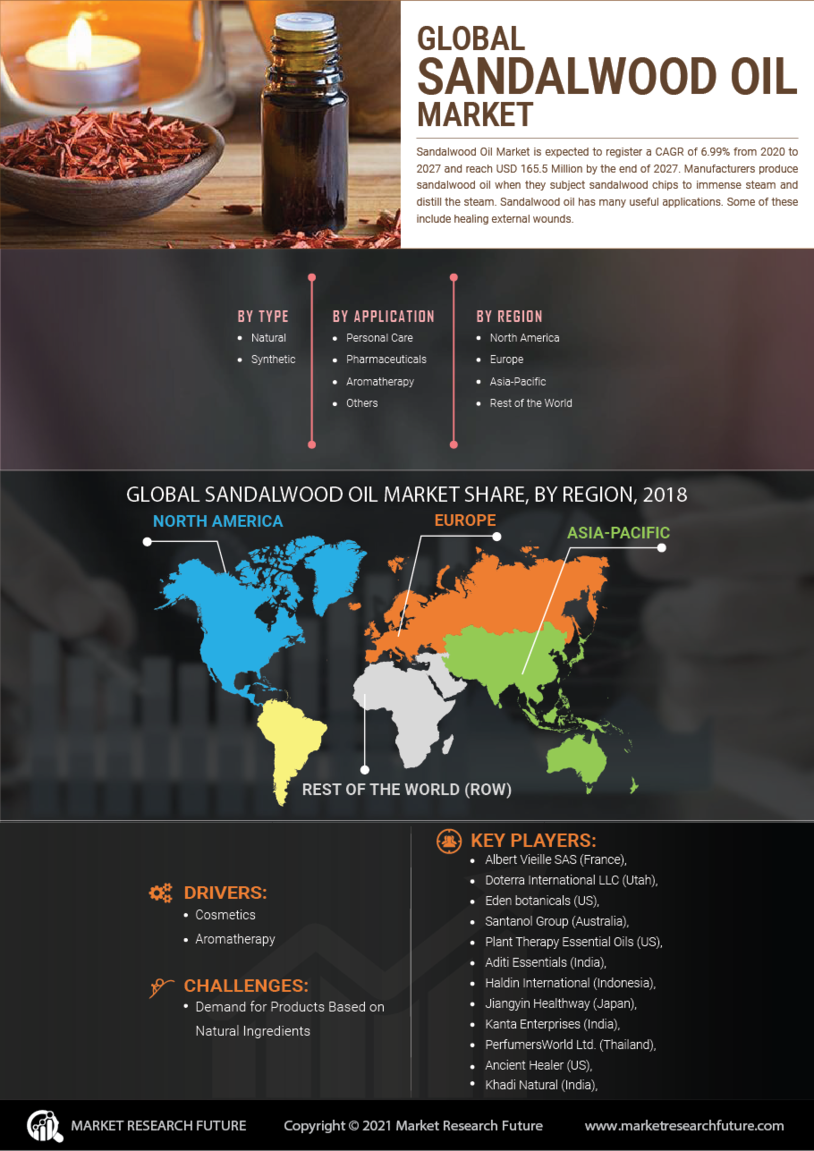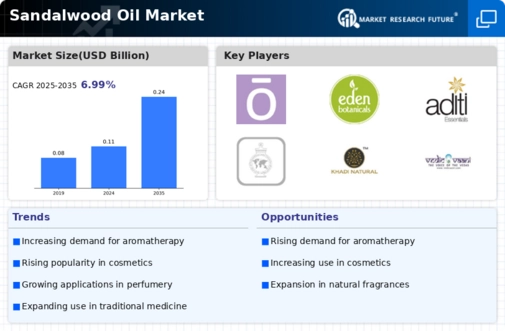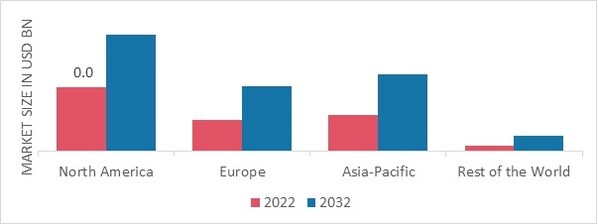Leading market players are investing heavily in research and development in order to expand their product lines, which will help the Sandalwood Oil market, grow even more. Market participants are also undertaking a variety of strategic activities to expand their footprint, with important market developments including new product launches, contractual agreements, mergers and acquisitions, higher investments, and collaboration with other organizations. To expand and survive in a more competitive and rising market climate, Sandalwood Oil industry must offer cost-effective items.
Manufacturing locally to minimize operational costs is one of the key business tactics used by manufacturers in the Sandalwood Oil industry to benefit clients and increase the market sector. In recent years, the Sandalwood Oil industry has offered some of the most significant advantages to medicine.
Major players in the Sandalwood Oil market, including Albert Vieille SAS, Doterra International LLC, Eden botanicals, Santanol Group, Plant Therapy Essential Oils, Aditi Essentials, Haldin International, langyin Healthway, Kanta Enterprises, PerfumersWorld Ltd., Ancient Healer, Khadi Natural, Vedic Vaani, Cliara Essential Oils, and Sallamander Concepts Pty Ltd, are attempting to increase market demand by investing in research and development operations.
A chemical corporation is BASF SE (BASF). It manufactures, markets, and sells chemicals, polymers, crop protection products, and performance items. The company's product line includes solvents, adhesives, surfactants, fuel additives, pigments, paints, food additives, electronic chemicals, fungicides, and herbicides. The firm works with a wide range of sectors, including those related to building, woodworking, agriculture, paints and coatings, transportation, electronics and electrical, home care, nutrition, and chemicals. R&D is conducted by BASF in collaboration with international clients, partners, and scientists. A network of production sites supports the company's operations.
It is present throughout North America, Asia Pacific, Europe, South America, Africa, and the Middle East. The headquarters of BASF are in Ludwigshafen, Germany. BASF Nutrition & Health announced the release of Isobionics Santalol, a substitute for sandalwood oil, in July 2020 as the result of their first joint venture. Santalol Isobionics is readily available and protects the environment. It consistently produces products of good quality and is unaffected by the weather or harvesting conditions.
Sandalwood plantations are handled by Santanol. Pure, natural, ethical, and sustainable sandalwood oils and products are produced and supplied by the company's sandalwood plantations, giving its clients access to high-quality goods with both medicinal and cosmetic uses. The Western Australian plantation and distillation business Alpha Santanol Pty., which cultivates, distils, and sells Indian sandalwood oil, announced its merger with Mercer International Inc. in October 2018.


















